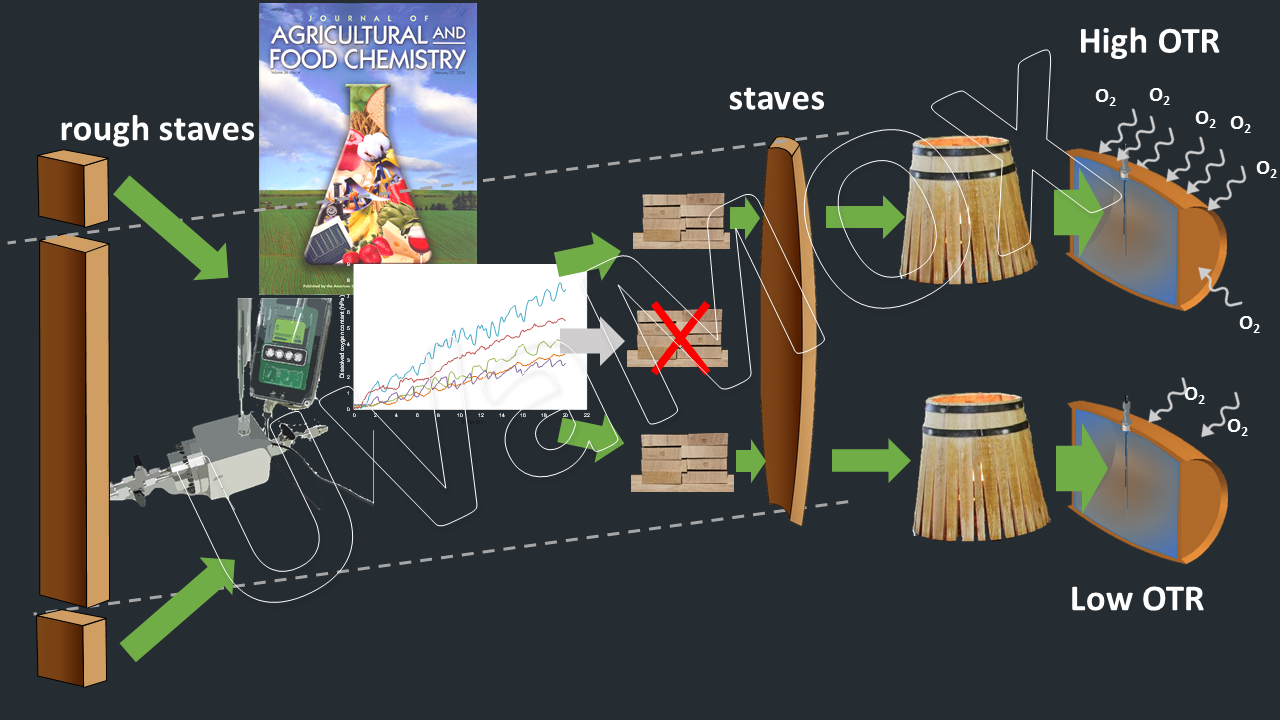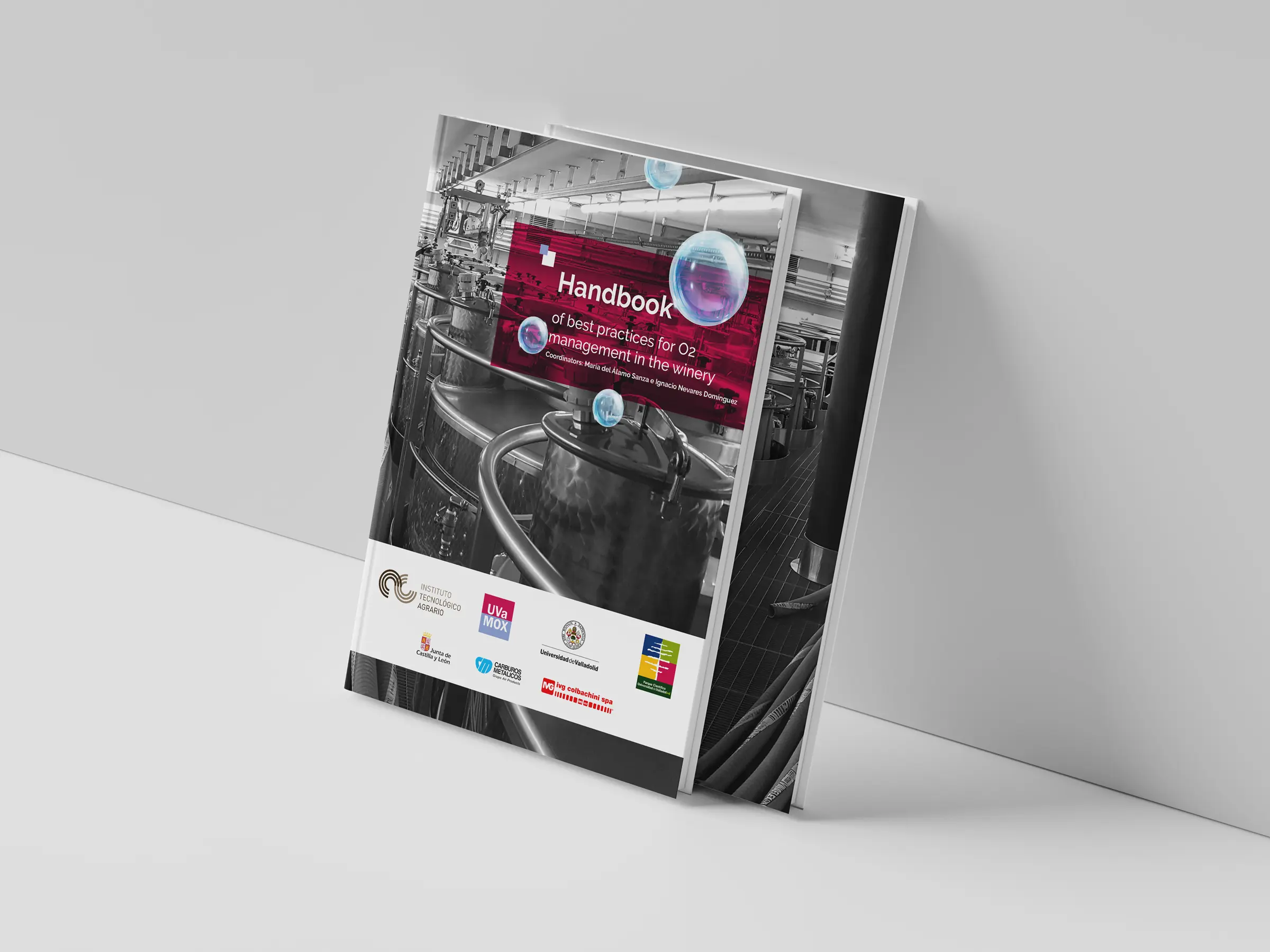This study proposes a device and a procedure for the routine measurement of the OTR of oak wood. It is important to highlight that the device has the capacity to reproduce working conditions that are similar to those of the barrel, which allows its use in the classification of rough staves for the manufacturing of barrels.
This work has been just published in the Journal of Agricultural and Food Chemistry in an article entitled Oak stave oxygenpermeation: a new tool to make barrels with different wine oxygenation potential
The aim of this study was to classify rough staves according to their permeability to oxygen by measuring their transmission rate in order to assess the capacity to build barrels with high and low oxygen transmission rates (OTRs). The ability to assess the OTR would be important for better understanding and controlling the aging process of wine in barrels.
To accomplish this, we built a device that measures the OTR of rough staves under the same conditions as those in a full barrel, in which the stave is in contact with a liquid solution on one face and with a diffusing gas on the opposite face. A total of 69 rough staves were classified to yield a high-OTR group, with a mean 2.6 times higher than the mean of the low-OTR group. A high-OTR and low-OTR barrel were constructed, and we confirmed that the stave OTR decreased between 3- and 4.5-fold in the barrels and that the high-OTR barrel allowed the entry of twice the concentration of oxygen compared to the low-OTR barrel. These results confirmed the capacity to classify rough staves and build barrels with different OTRs.
Conclusion: The results show that the classification of rough stave wood has indeed allowed the construction of barrels with high and low oxygen permeability, accomplishing our aim. It was demonstrated that the high-OTR barrel allows almost twice as much oxygen to be transferred throughout the oak wood into the wine as the low-OTR barrel. The importance of the assembly of staves in the global OTR during barrel construction has been confirmed, a result that requires a deeper study on the factors determining the OTR in this process. Moreover, it was confirmed that the toasting and bending processes are important in the oxygen permeability decrease in oak wood used for barrel making.
We share this manuscript with the scientific community through Research Gate




